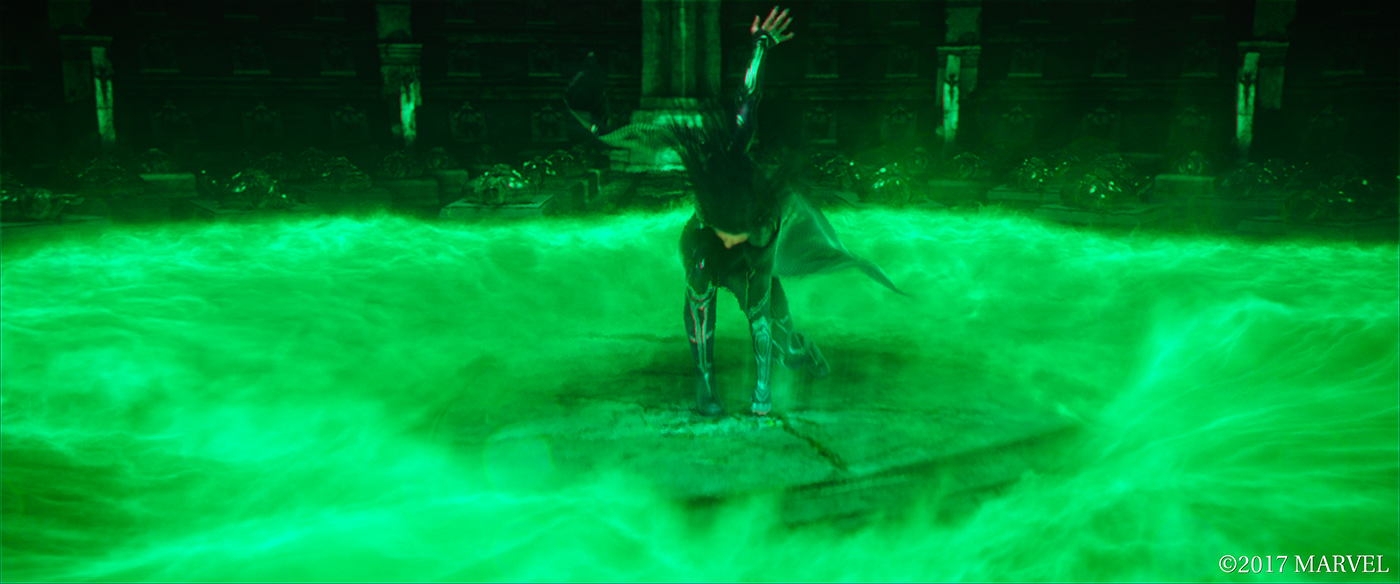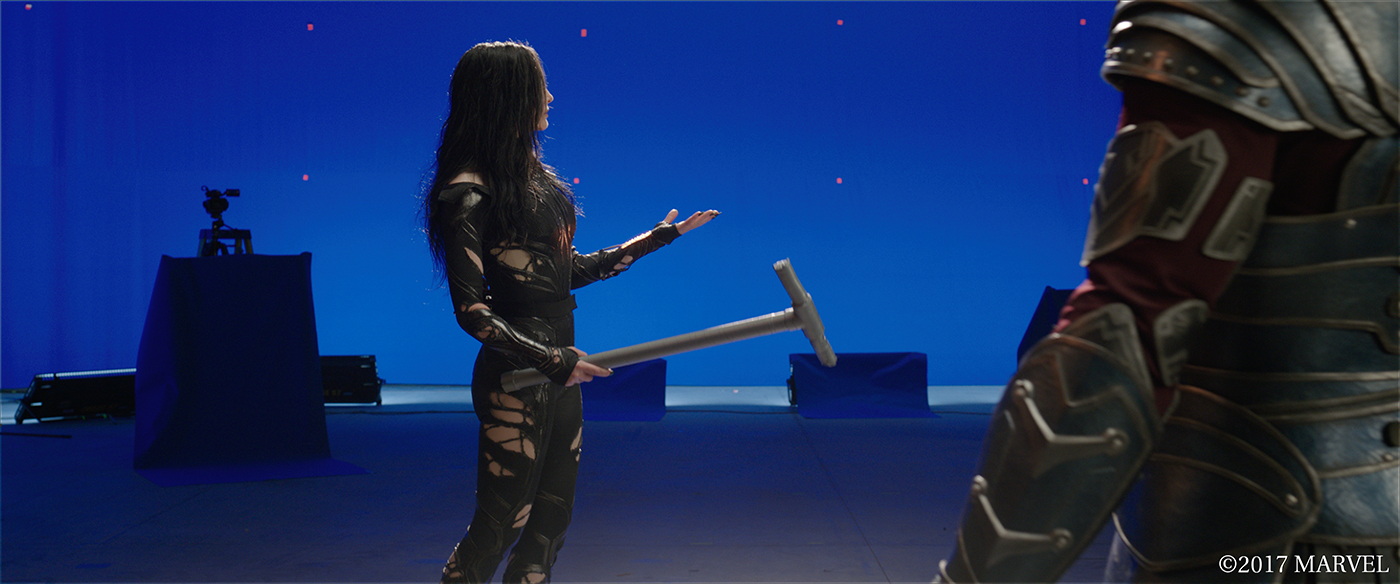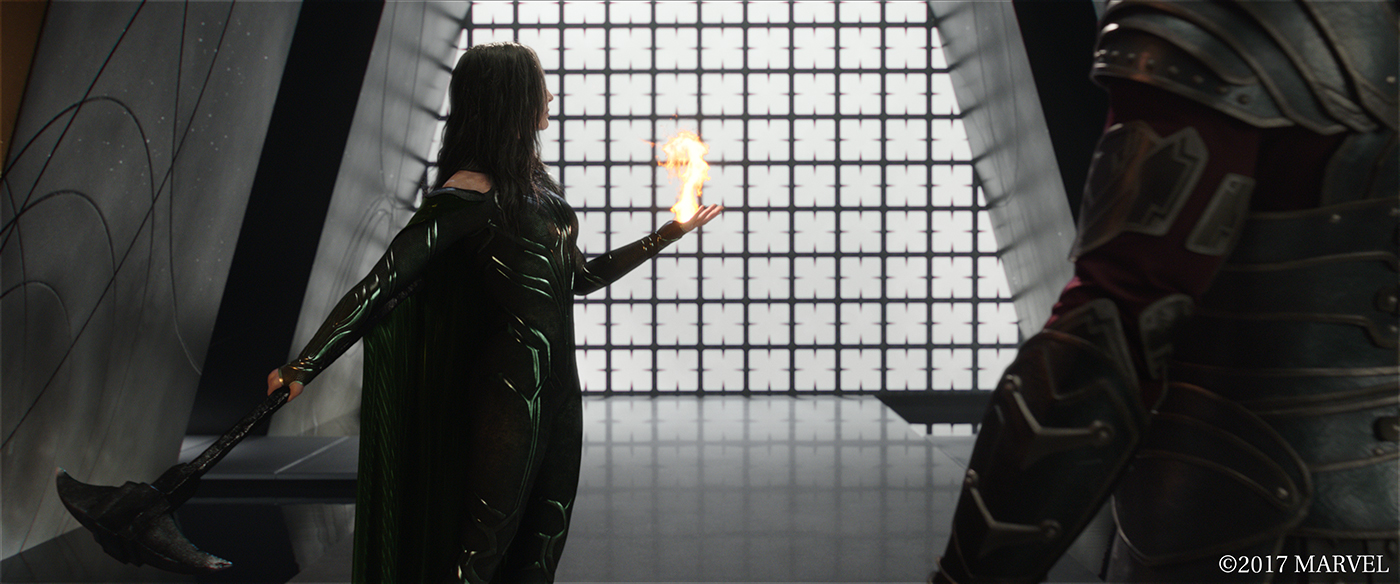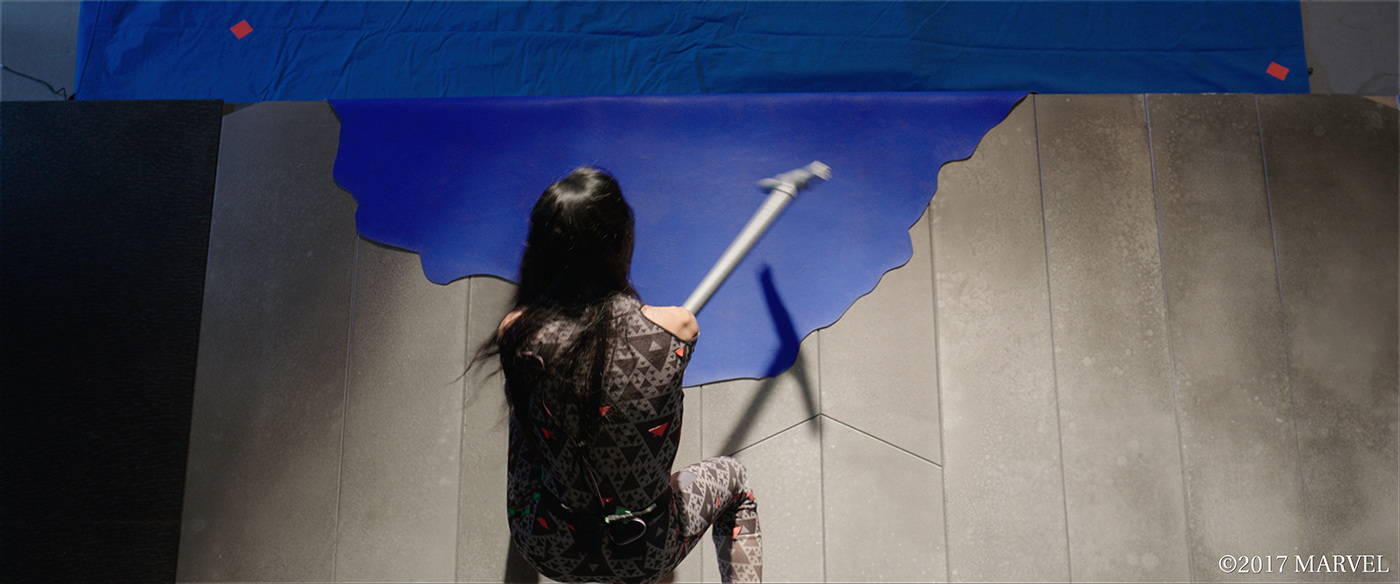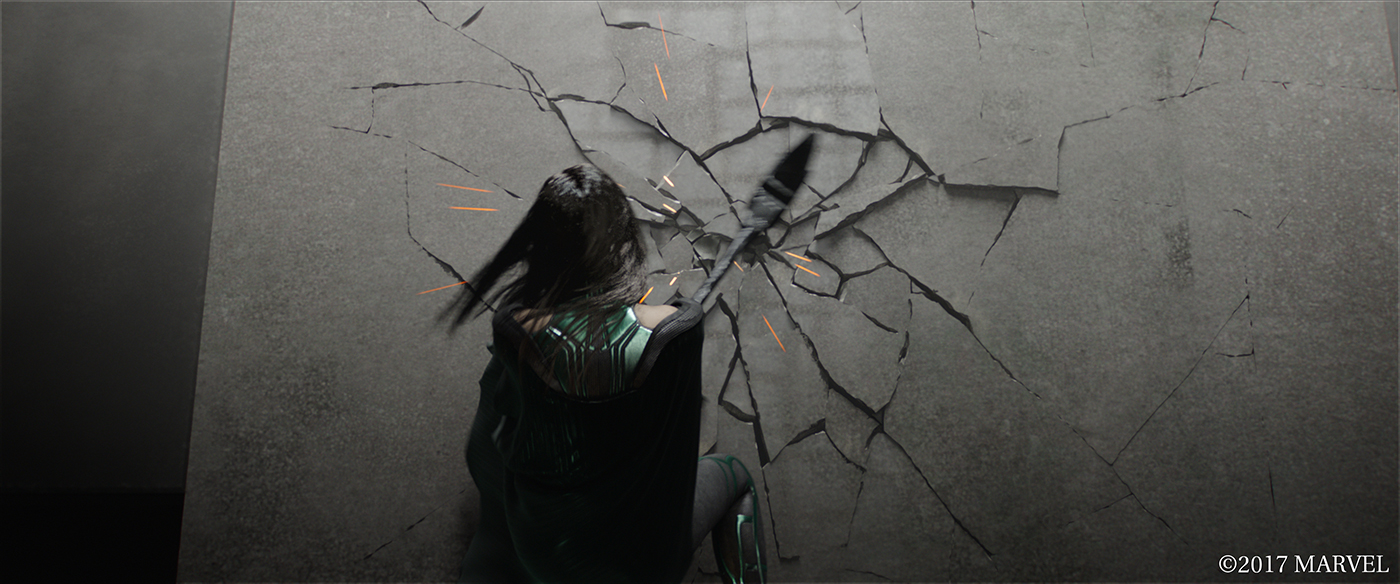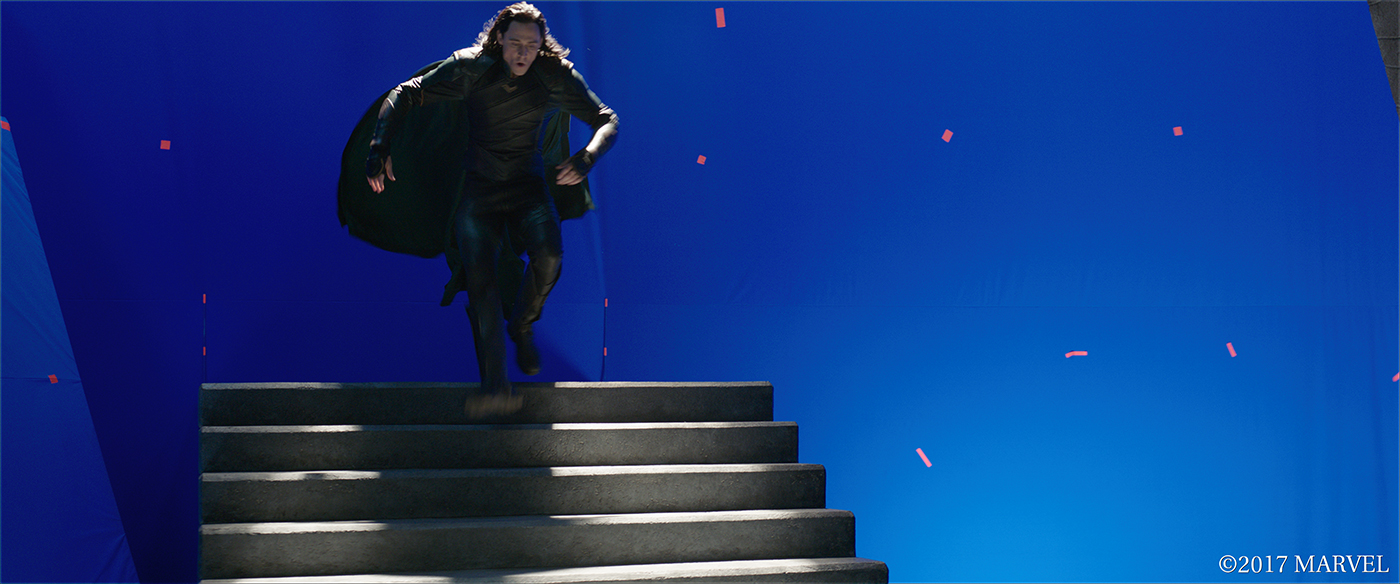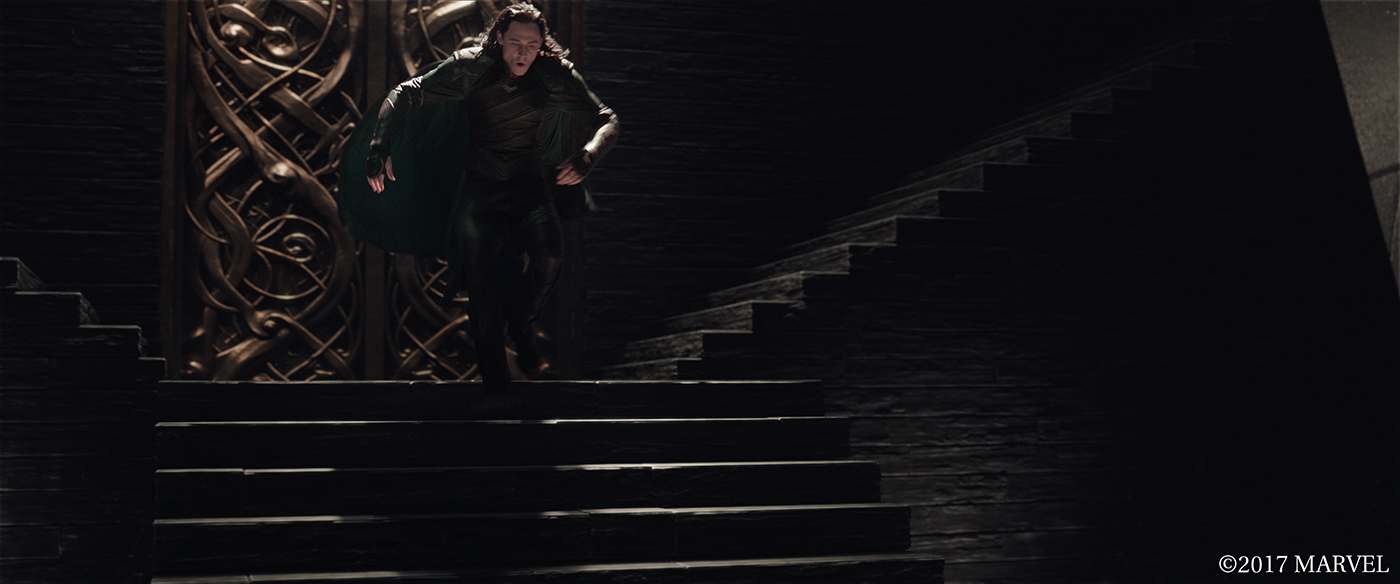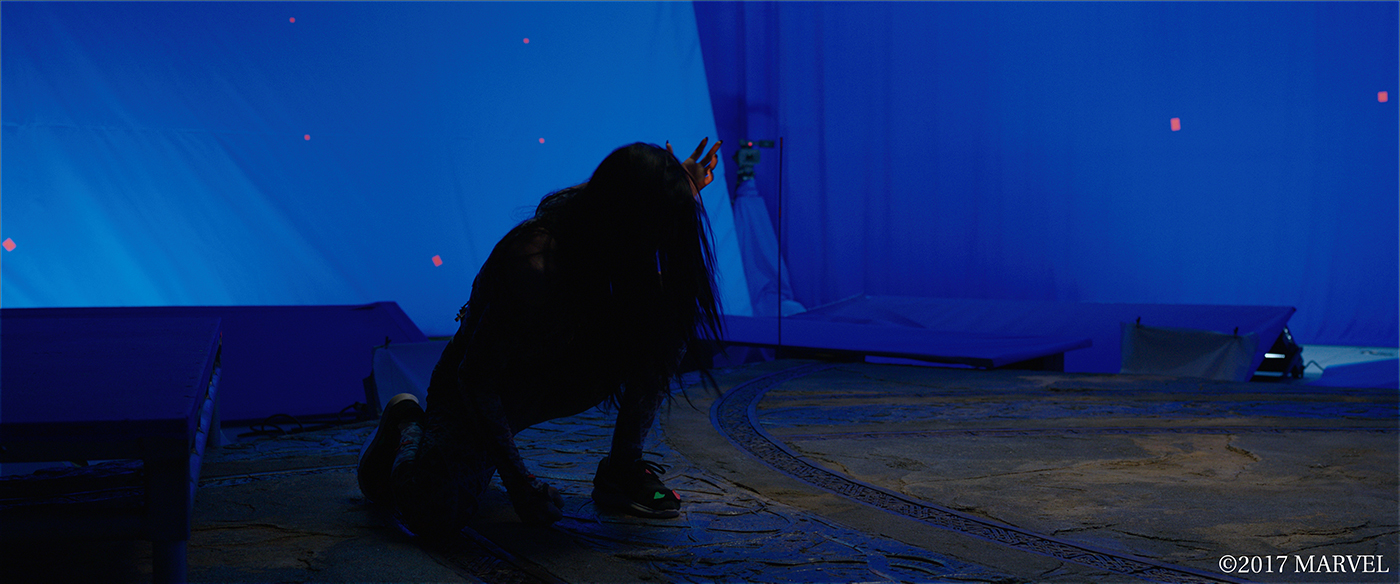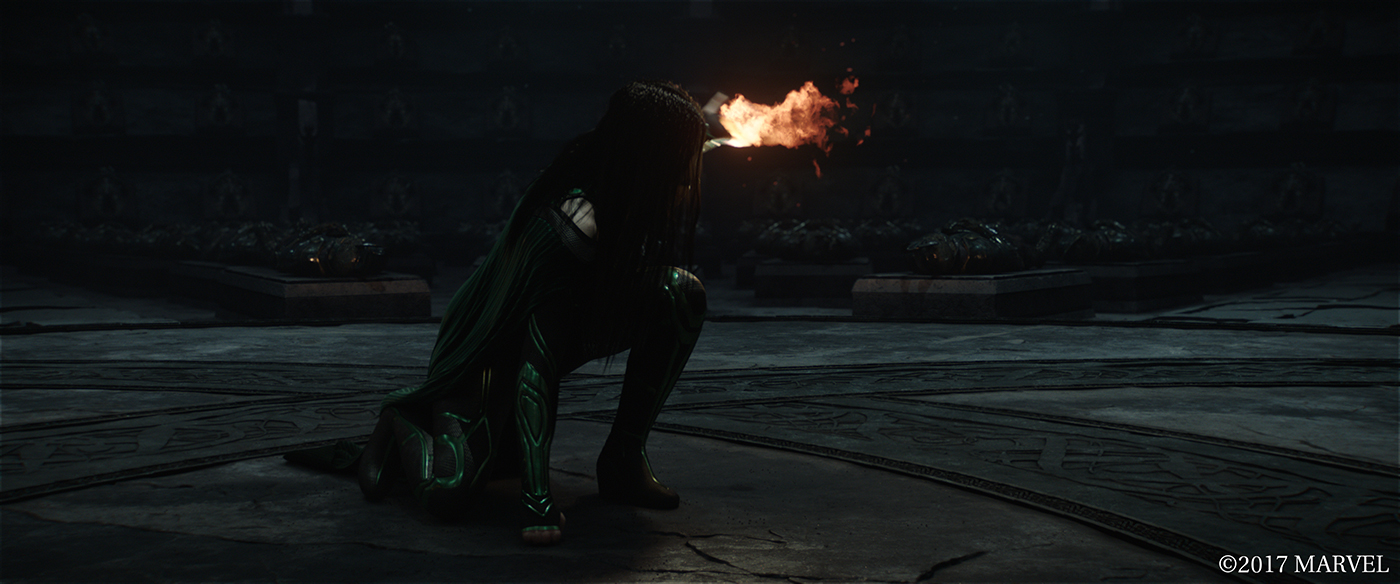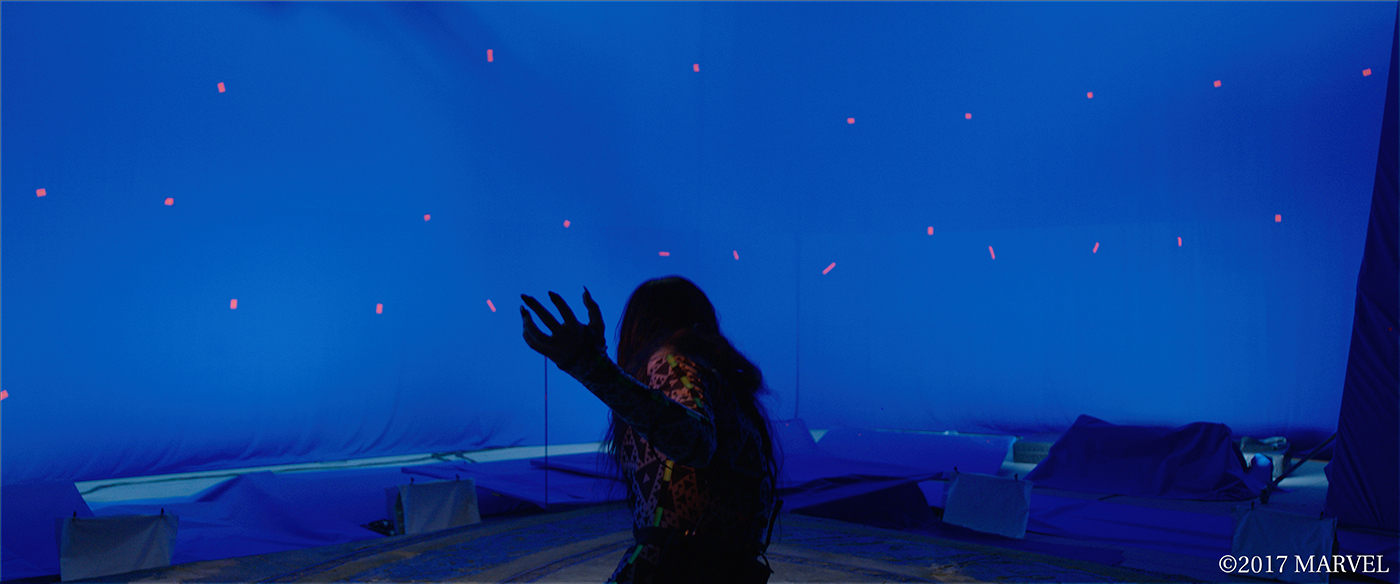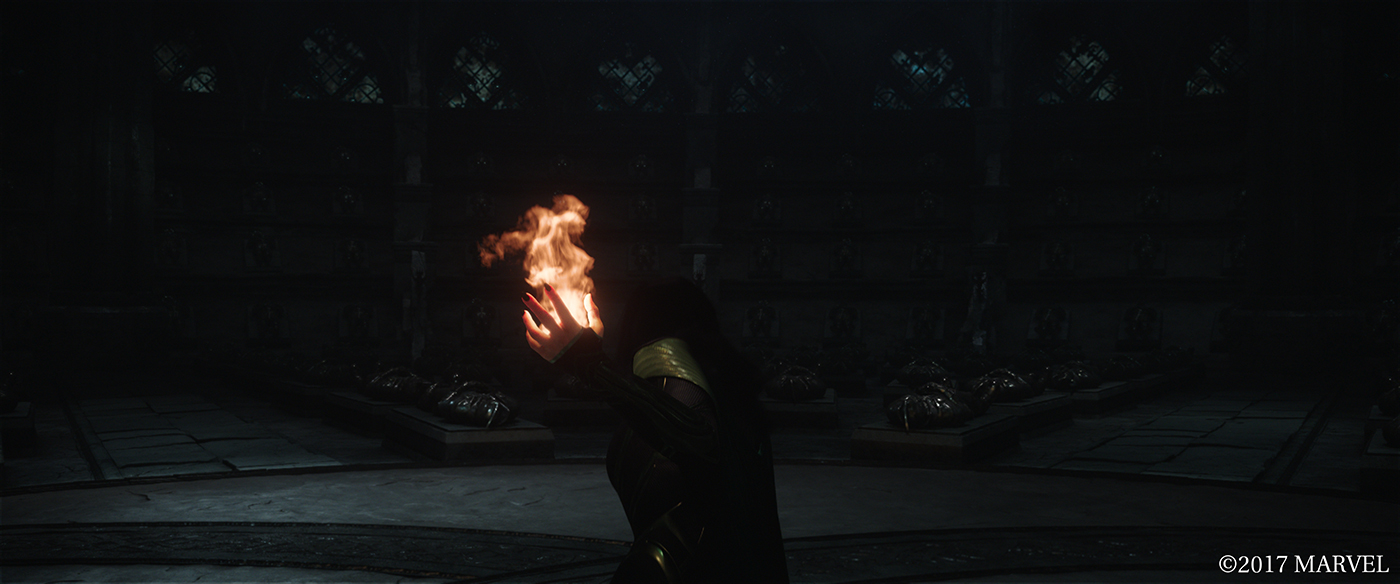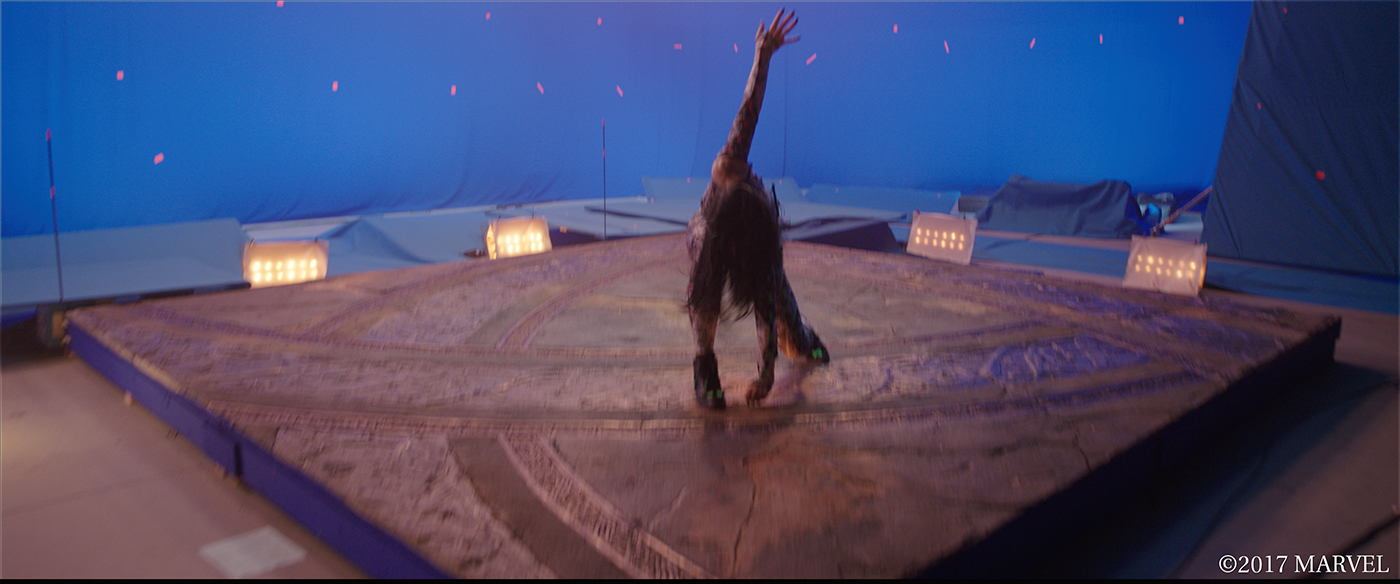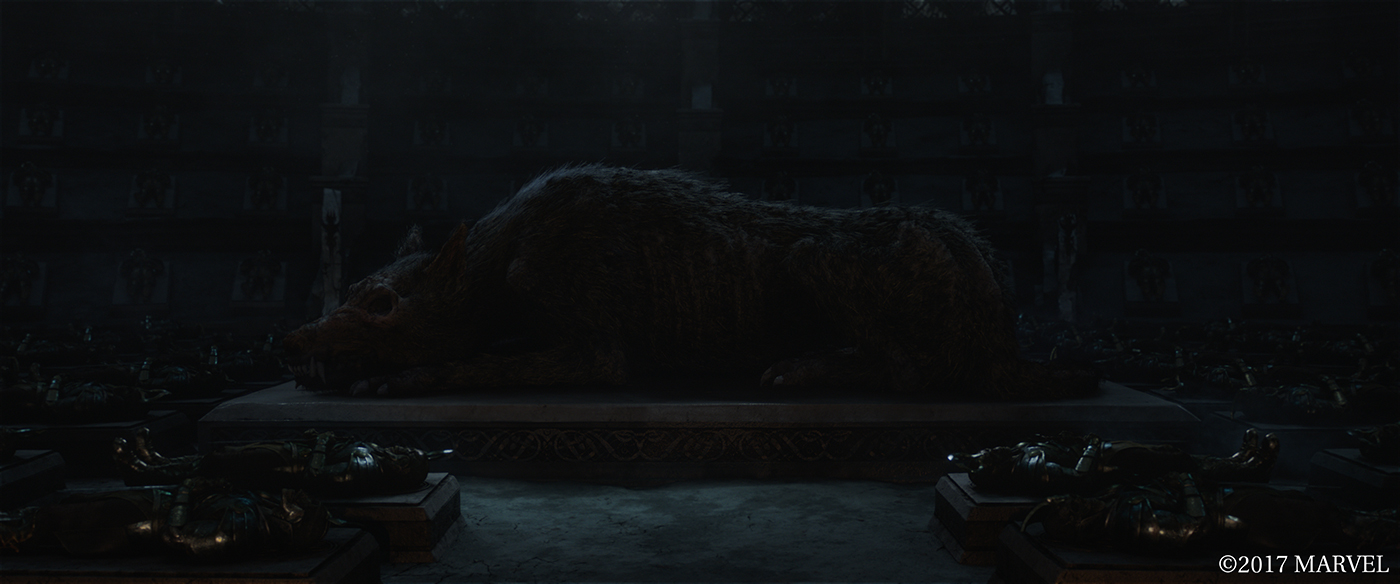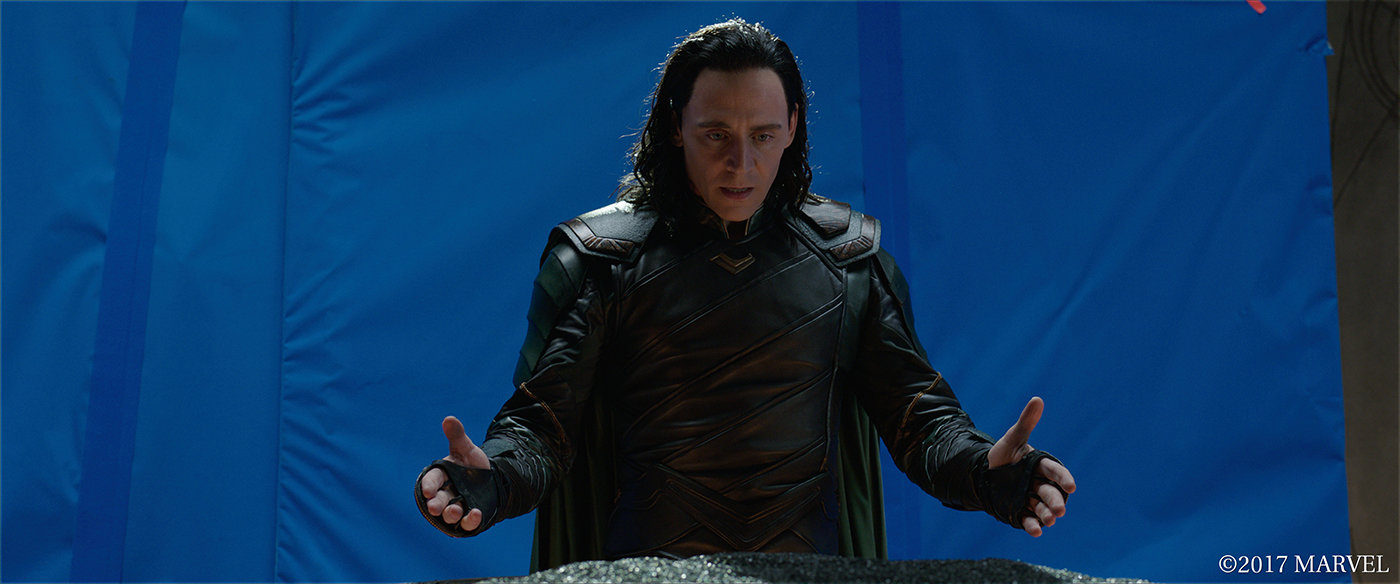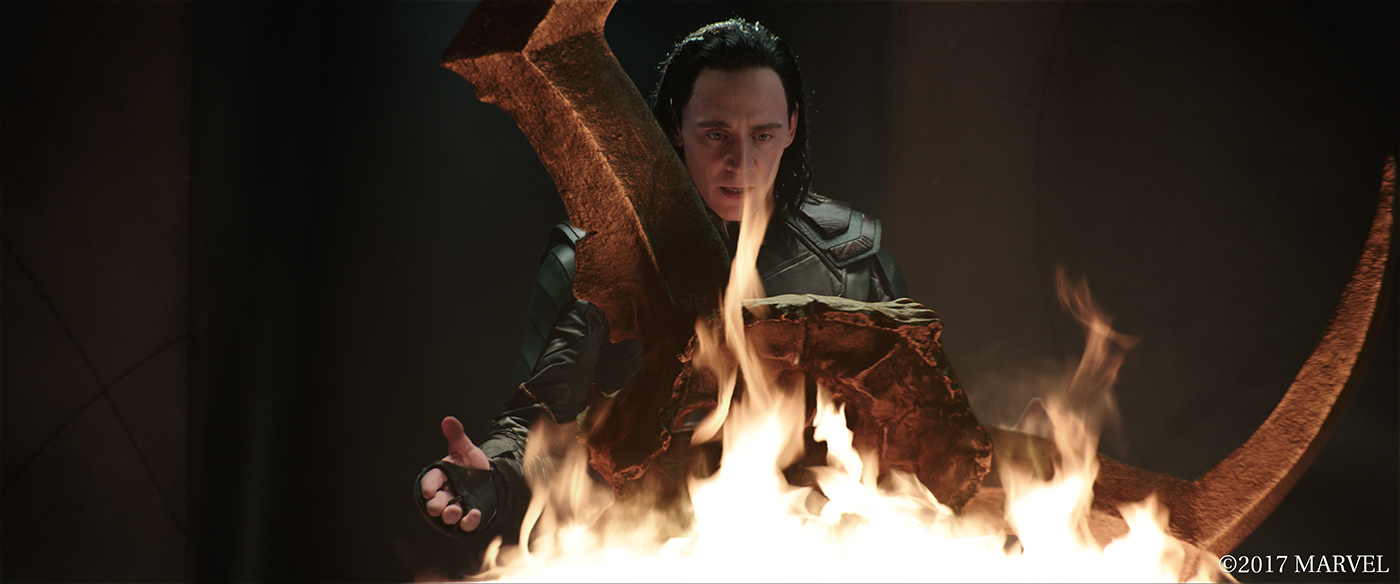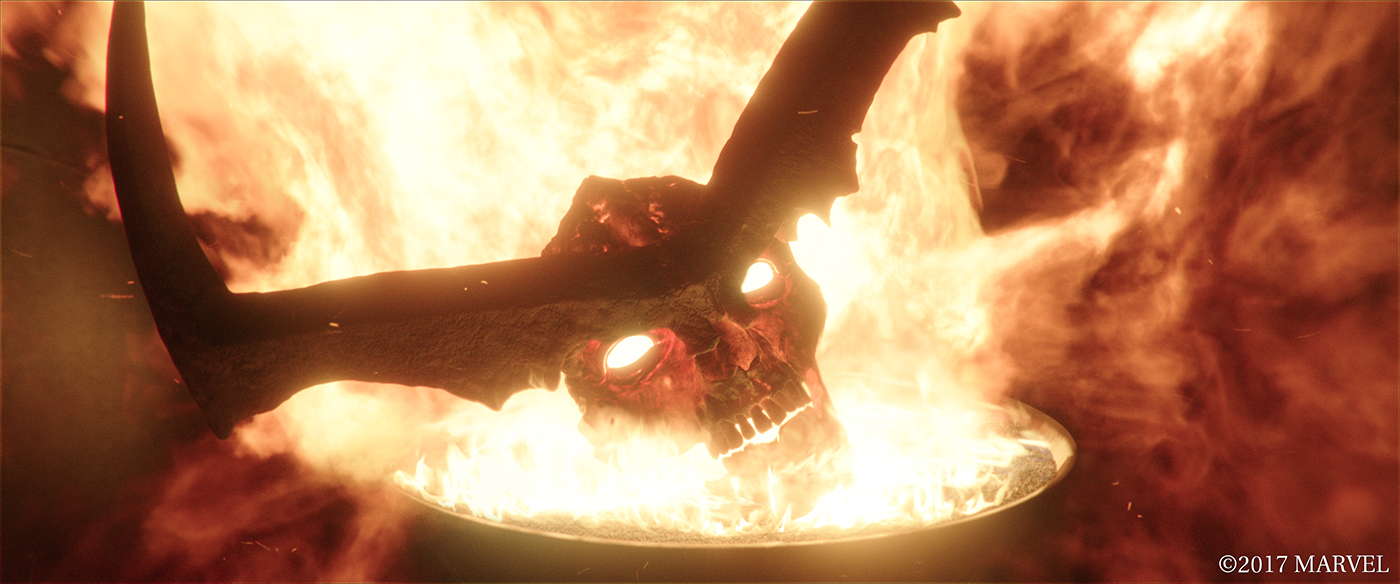Last year, Alessandro Cioffi explained the work of Trixter on GUARDIANS OF THE GALAXY VOL. 2. He is back today to talk about his new Marvel Studios collaboration with THOR: RAGNAROK.
How did you and Trixter get involved on this show?
We were approached by Cyndi Ochs in late May for supporting the VFX work on the show for the last rush of production.
How was the collaboration with director Taika Waititi and VFX Supervisor Jake Morrison?
Excellent and cheerful. Taika attended every cineSync session and he kept a positive and playful mood throughout the whole time of our collaboration. That helped alleviating the natural tension of such an ambitious schedule.
Jake did a peerless job orchestrating all the dynamic inputs and directions from Studio (also present at every CS meeting, in the person of Victoria Alonso and Kevin Feige) and director, awesome job. It was for me a pleasure to join Jake’s team on a show again, after MARVEL ONE-SHOT: ITEM 47, back in 2012.
What was their approaches and expectations about the visual effects?
As late-comers we had the priority to seamlessly blend in the aesthetics of the movie and quickly absorb the significant work previously done by other vendors. In fact we were provided with some assets, but also add variations, create some other and create the environments around.
What are the sequences made at Trixter?
The sequence we’ve worked on starts with Hela and Skurge entering The Vault, going through all the mighty artifacts kept there. Hela’s goal is though to use the Eternal Flame to revive her army of the dead and her beloved Fenris, down in the Crypt. With this pivotal moment the sequence ends.
We did work on additional mini-sequence involving Loki, in the Vault, bringing back the Surtur to life.
How did you manage the challenge of the short schedule?
In these situations, I guess, keeping the production tidy and as linear as possible is key. We approached it by modules trying to get bunches of homogeneous shots approved as quick as possible and move on to next sub-groups. Some hard nuts to crack always end up standing in the way, of course, but Jake and the Studio, were very responsive and cooperative on our approach, providing prompt and sensible feedback to our fast turnarounds. The remaining ingredients in the recipe were the usual sweat and long hours. Ah, and beer at night. Lots of it!
How did you organize the work at Trixter?
We stayed classic there. Awesome band formation with CG Supes Radu Arsith and Patrick Hecht respectively at the assets and environments, Mr Alexey Kuchinsky at the compositings, Fuat Yueksel sorcering FX and rock-star Simone Kraus at the animations!
Can you tell us more about the creation of the Vault?
The Vault is a fairly simple environment, very geometric and clean from the architectonic point of view. It appears several time in the previous movies, hence we had clear references for its build. The sequence has been shot in a blue box, with just a few elements in, like the first flight of stairs or some of the pedestals, so we adapted the interior design to the set proportions and moved from there. Later we modified even the existing props on set which turned that environment. practically in a full CG space. The exterior of the Vault, visible in the establisher is instead a bit of a re-design, an actualization of what seen before.
How did you create the digital double for Hela?
Actually we didn’t. We received two different assets, from Rising Sun Pictures (RSP) and Method Studios, which we merged into a new one for our sequence. Some work was naturally done in lookdev but nothing major. The most work was to integrate hair in the new model, as it replaced the antler crown, so to speak, you see elsewhere in the film.
What references and indications did you received for the Crypt?
The Crypt is a brand new environment and the only bit built on set was a small portion of its ground, where Hela lands. There was some initial artwork we received from Production, but given the overall concept, it was completely re-designed as well. After a few rounds of concept-art, splendidly created by our Lead artist Markus Brackelmann, it was agreed on the shape you see it in the movie.
Can you explain in details about the creation of this environment?
The environment per se, is rather simple in it’s lines. It’s a vast circular room underneath a dome, with huge pillars sustaining it. Towards the outer perimeter the floor slopes up into broad inclined terraces.
The whole environment is populated with tombs, where the D-Guards are laying, forgotten. We had five variations of guards and tombstones, instanced in the environment via Houdini, for more flexibility, using a combination matrix of five by five.
How did you handle the lighting challenge in the Crypt?
The Crypt is by definition a dark environment. The real challenge was really to find the balance between what’s visible and what’s immersed in the shade. One of our lighting artists claims he heard me once saying « we need to reveal it, by hiding it », with the obvious consequent load of laughters at this alleged memorable comment. As ridiculous as it might sound, somehow it describes the approach we took on lighting the Crypt.
The main and only visible source of light is the Eternal Flame in in Hela’s hand, it moves with the camera and gradually reveals the ancient mystery of the once mighty army of the dead. Some ambient is given by the top source coming from the vault. This cold diffuse counteracts the warm flame’s point light. Additional rims are placed around to better sculpt the silhouettes of dead guards and, above all, of mummified Fenris.
Hela resurrects her D-Guards and Fenris. How did you create this beautiful FX?
This effect went through a number of revisions, from concept onwards (how explosive, how broken up, how ethereal etc.), until it was clear it had to become the powerful but non destructive wave of plasma we see in those two shots. The FX were produced in Houdini, and the main challenge was to have a sim-resolution that could hold up with the big scene scale. Fuat Yueksel, our FX Lead clarifies: we had a total scene diameter of 90m, but with the fire passing the camera. Splitting the sim into different LODs was not a real option, since it was a consistent ring of fire and you could always tell the single parts. So we ended up having a distributed pyro sim with almost 500 mio voxels per field, with 6 fields in total.
The fire had to be fully art directable in terms of height, shape and motion. The shot had a range of 141 frames and we used a physical correct combustion model in our sim, which makes it extremely hard to art-direct, especially with almost 6 seconds of simulation. In addition, we aimed for a fluent, crawling fire behavior. To achieve this motion, we beforehand created a flip-simulation in pre-defined areas with its « crawling collisions ». We then literally turned that water into fire. By default, this would end in nothing else but a huge fireball explosion (think of fuel/kerosene flooding a large area being ignited).
To make the fire still believably « crawl on the floor », we built a system to advect the fuel with the water, burn only the amount of « water » wanted/needed, and thus be able to define its flame-front, motion and burn-duration. And yet still remain its overall motion.
Can you explain in details about the creation of Fenris?
Revived Fenris is not a Trixter build. Her mummified version it is. Although inanimate -so rather a sculpt- its creation was both challenging and fun. You know, we all love creepy characters. A number of rounds concept art were needed to frame the spirit of the character, followed by several asset’s revisions to nail her in the look. Filmmakers didn’t want to have her appear too skinny, but not to ‘healthy’ either. Fur distribution and density was redesigned multiple times, as well as its appearance. She had to look dusty and ancient but, guess what, not too much!
The living version of Fenris was delivered by Framestore, and in the only one shot down in the Crypt were she rejoins Hela, in that brief moment, animation was meant to convey a sense of mistrust first, wonder, liberation and, finally, vengeful fury.
Can you explain in detail about the D-Guards animation?
As mentioned before, for the totals, we instanced five variations of the same asset. Pre-cached long animations, drawn on our library, were then randomly off-set in time in order to animate the crowd.
For the closeups, we used key-framed animation. Creatives didn’t want to see a familiar-by-now zombie behavior, nor wanted they feel a mo-cap sense to it, but rather a staccato animation style, almost a retro taste.
Later Loki put Surtur crown in the Eternal Flame. How did you create this FX?
Practical fire was shot and kept in some of the shots, up in the Vault. That set the standard for all fire elements in the sequence, although in both cases, when Hela holds it in her hand and in Surtur’s rise, a good deal of art-direction was needed on the simulations to convey the desired aura of necromancy effect. Once again we solved the challenges in Houdini with its great simulation tools and some custom tailoring as usual. In Surtur case specifically, we used a number of lookdev tricks to deliver the ignition effect.
What is your favorite shot or sequence?
My favorite shot is the second-last one in the sequence, when Hela finally rejoins Fenris: Cate Blanchett looks gorgeous in that shot, her performance immediately delivers Hela’s found supremacy, as she stands at the center of the Crypt surrounded by her Army of the Dead. The picture has a very powerful composition, I find.
What was the main challenge on this show and how did you achieve it?
The main challenge was definitely the schedule. We had very few weeks to deliver and, as said above, there’s was extremely narrow room for development and investigation. We had to just go for clear shots, like pull the trigger and cross fingers! All went good, we hit the mark. Happy ending.
What is your best memory on this show?
We you work so intensively on something, a feeling of camaraderie grows in the team, regardless the pressure. That’s what remains at the heart.
How long have you worked on this show?
As said, scarcely eight weeks from plates’ ingestion to final delivery.
What’s the VFX shots count?
Around 55, not all made it in the cut though.
What was the size of your team?
A band of 65 brave ones.
What is your next project?
I just signed an NDA a few minutes ago. Sorry!
A big thanks for your time.
// WANT TO KNOW MORE?
Trixter: Official website of Trixter.
© Vincent Frei – The Art of VFX – 2018


